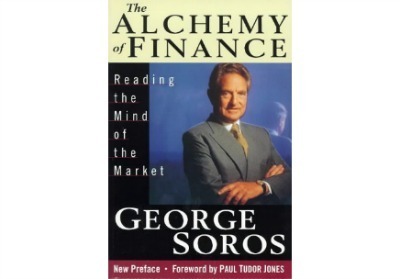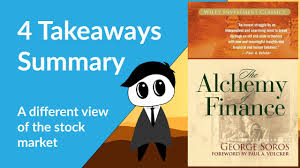George Soros The Alchemy of Finance Summary: 2nd Edition

“The Alchemy of Finance” is a book written by George Soros, a renowned investor, philanthropist, and hedge fund manager. In the book, Soros shares his investment strategies and introduces his theory of reflexivity, which has become a central concept in his approach to financial markets.
Soros combines fundamental analysis, technical analysis, and market psychology in his investment approach. He emphasizes the importance of recognizing and understanding the biases and misconceptions that influence market behavior. By understanding these biases, investors can potentially identify market inefficiencies and profit from them.
The Alchemy of Finance Reviews
The Alchemy of Finance Summary

“The Alchemy of Finance” by George Soros is a book that explores Soros’s investment strategies and his theory of reflexivity. The book was published in 1987 and has since become a prominent work in the field of finance. Here is a summary of the key points covered in the book:
- Soros’s Theory of Reflexivity:
One of the central ideas in the book is Soros’s theory of reflexivity. He argues that market prices are not solely determined by underlying economic fundamentals but are also influenced by the perceptions and beliefs of market participants. These perceptions can create feedback loops that can either reinforce or distort market trends.
- The Role of Bias and Misconceptions:
Soros emphasizes the importance of recognizing and understanding biases and misconceptions that can affect market behavior. He believes that market participants often have imperfect and biased views, and these views can impact investment decisions and market outcomes.
- Fundamental and Technical Analysis:
Soros combines both fundamental and technical analysis in his investment approach. He considers factors such as economic indicators, company fundamentals, and market trends to make investment decisions.
- The Concept of “Reflexivity in Action”:
Soros provides examples from his own investment experiences to illustrate the concept of reflexivity in action. He shares insights into his successful investments, including his famous bet against the British pound in 1992.
- Market Psychology:
The book explores the role of market psychology in shaping market trends and investor behavior. Soros discusses the impact of fear, greed, and other emotions on market participants and how these emotions can contribute to the formation of bubbles and market inefficiencies.
- Understanding Risk and Uncertainty:
Soros emphasizes the importance of understanding risk and uncertainty in investment decisions. He discusses the limitations of traditional risk management models and suggests alternative approaches to managing risk.
- The Role of Financial Institutions:
Soros also examines the role of financial institutions, such as banks and hedge funds, in shaping market dynamics. He discusses the interactions between market participants and the impact of institutional behavior on market trends.
“The Alchemy of Finance” is a complex and thought-provoking book that combines economic theory, philosophy, and practical investment insights. It offers readers a glimpse into Soros’s investment strategies and provides a framework for understanding the dynamics of financial markets. However, it’s important for readers to critically evaluate the ideas presented and consider their investment approach and risk tolerance.
The Alchemy of Finance, 2nd Edition
George Soros, Paul A. Volcker (Foreword by)
ISBN: 978-0-471-44549-4 June 2015, 416 Pages
TABLE OF CONTENTS
- Foreword to the New Edition
by Paul A. Volcker xi - Foreword to the First Edition
by Paul Tudor Jones II, xv - New Preface xix
New Introduction 1
Part One Theory
- Reflexivity in the Stock Market 49
- Reflexivity in the Currency Market 73
- The Credit and Regulatory Cycle 85
Part Two: Historical Perspective
- The International Debt Problem (95)
- The Collective System of Lending (107)
- Reagan’s Imperial Circle 115
- Evolution of the Banking System (123)
- The “Oligopolarization” of America (133)
Part Three: The Real-time Experiment
- The Starting Point: August 1985 (145)
- Phase 1: August 1985–December 1985 (153)
- Control Period: January 1986–July 1986 (201)
- Phase 2: July 1986–November 1986 (241)
- The Conclusion: November 1986 (295)
Part Four: Evaluation
- The Scope for Financial Alchemy: An Evaluation of Experiment (307)
- The Quandary of the Social Sciences (317)
Part Five: Prescription
- Free Markets Versus Regulation (325)
- Toward an International Central Bank (333)
- The Paradox of Systemic Reform (351)
- The Crash of ’87 (355)
- Epilogue 371
- Notes 377
- Appendix 381
George Soros biography at a glance:







